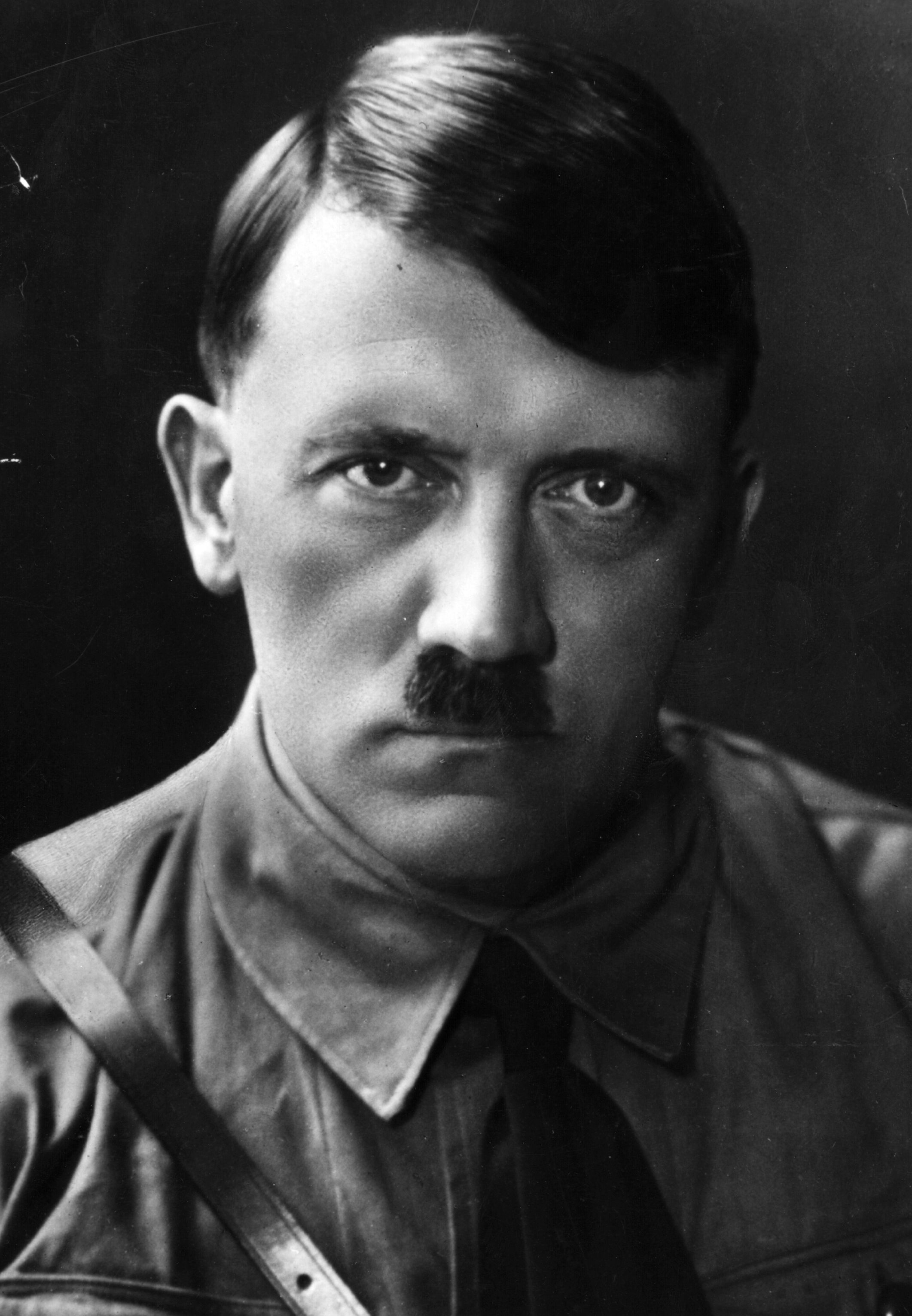The
Wars and Conflicts of Adolf Hitler

Adolf
Hitler
Adolf Hitler was the dictator of Germany for 12
years. While it is well-known that Hitler led Germany
into World War Two, it is not as well known that there
were several other conflicts that Germany engaged in as
the leadup to the Second World War. Also, Hitler himself
was a German Army veteran of World War One. Below is a
listing of the Wars of Adolf Hitler
World
War One
(1914-1918)--Adolf Hitler, though born an Austrian
national, joined the German army upon the outbreak of war
in 1914. He had moved to the southern German region of
Bavaria in 1913, and joined a Bavarian military unit.
Hitler served in the German Army on the Western Front in
Belgium and France. He later served as a regimental
runner in the 16th Bavarian Reserve Regiment, and was
twice decorated for bravery. Hitler received the
relatively common Iron Cross, Second Class, in 1914 and
Iron Cross, First Class, in 1918. In 1916, Hitler was
wounded in the groin area/ left thigh area during the
Battle of the Somme, and returned to the front in March
1917. On October 15, 1918, Hitler was admitted to a field
hospital, temporarily blinded by a mustard gas attack.
Hitler was still in hospital when Germany surrendered to
the Allies on November 11, 1918.
After the war, Hitler
returned to Bavaria, still a member of the army. At one
point he guarded Russian prisoners of war awaiting
repatriation, but in July of 1919, Hitler was appointed a
Verbindungsmann (police spy) of an
Aufklärungskommando (Intelligence Commando) of the
German Army. Hitler's assignment was to both influence
other soldiers politically, and to infiltrate a small
political party, the German Workers' Party (DAP). In
examining this party, Hitler was drawn to the party's
anti-semitic, nationalist, anti-capitalist, and
anti-Marxist agenda. Hitler joined the DAP, becoming the
55th member to join the party. In order to appeal to more
potential recruits, the party changed its name to the
Nationalsozialistische Deutsche Arbeiterpartei or
National Socialist German Workers Party.. Hitler quickly
rose through the ranks of the the Party, and his unique
speaking style and his vocal hatred of Jews, Marxists,
and others who he claimed had betrayed Germany drew more
members to the party. In 1923, Hitler believed that the
his Party was strong enough, and popular enough, to
overthrow the Bavarian state government. Thus, the first
of Hiter's conflicts began, as the Hitler's forces staged
an attempted putsch, or quick overthow of a government,
in the Bavarian capital of Munich.
The Bavarain police met
the putsch with gunfire, and Hitler was arrested and
convicted of treason. During his imprisonment, Hiter
wrote his famous book, Mein Kampf (My Struggle),
in which he detailed his plans to create a Germany that
would wipe rise from the ashes of the defeat in the First
World War, and would eliminate the Jews. Upon his release
from prison, Hitler rebuilt his party, took part in the
electoral process (and also had his Party thugs engage in
bloody street battles with any political group that got
in their way). By 1933, Hitler's Party performed well
enough in elections that German President Paul von
Hindenburg appointed Hitler as the German Chancellor.
After Hindeburg's death in 1934, Hitler declared the
office of president vacant, and made himself the Fuhrer,
or leader of Germany.
Below
is a list of the Wars of Adolf Hitler following World War
One:
Hitler's
Beer Hall Putsch
(Nov. 8-11, 1923)--Political agitator Adolf Hitler led
his National Socialist Party in an attempted overthrow of
the Bavarian government. The police crushed his uprising,
and Hitler was sentenced to prison.
Spanish
Civil War
(1936-1939)--Hitler's Germany and Fascist Italy send
troops and air power to help Fascist Spanish rebel
Francisco Franco defeat Spanish Republican forces.
German
Annexation of Austria
(March 12-13, 1938)--Germany invades and annexes
Austria.
German
Annexation of the Sudetenland
(1938)--Hitler threatened to invade Czechoslovakia in
order to gain control of the German-speaking Sudeten
border region. Britain and France allow Hitler to seize
the Sudetenland.
German
Annexation of Bohemia and Moravia
(March 10-16, 1939)--Hitler completes his takeover of
defenseless Czechoslovakia. The eastern part of the
nation became an "independent" satellite of Germany
called Slovakia.
World
War II
(1939-1945)--The European portion of World War II
officially began on Sept. 1, 1939 with the German
invasion of Poland. The European war ended in May, 1945
with the complete defeat and occupation of Germany by the
Allies. Germany was eventually split into the democratic
West Germany and the Communist East Germany until the
East German collapse in 1989 and the re-unification of
Germany in October, 1990.
